Majestic entrances have long been a hallmark of New York City's most iconic apartment buildings. Most do not have gated entrances, however. Gates are intimidating portals usually meant to keep out hoi polloi (the masses) and keep in the pit bulls.
Occasionally, they can be grand, befitting hoi oligoi (the few), and in this deluxe era, it is not surprising that more of such gates are rising in Manhattan.
Occasionally, they can be grand, befitting hoi oligoi (the few), and in this deluxe era, it is not surprising that more of such gates are rising in Manhattan.
In this article:
Two vaulted entrances to the courtyard of the Belnord apartment building, which occupies a full block between 86th and 87th streets on the Upper West Side, feature new gates.
The black metal gates, designed by Page Ayres Cowley Architects, are topped by spikes and large italic, gilded Bs. In approving the new gates back in August 2006, the Landmarks Preservation Commission noted that the "form, details, and finishes of the gates" and a new security guard booth at the eastern entrance "will relate well to the arched entranceways and their decorative elements."
The Belnord, designed by Hiss and Weekes and built in 1909, boasts a rusticated limestone base and is one of the city's most spectacular "courtyard" buildings.
Of course, the imposing Belnord gates are not quite as exquisite as those at the Metropolitan Club at 1 East 60th Street, and they are not the city's only impressive recent portals. When architects Herzog & de Meuron first released renderings for their design of 40 Bond Street in the early 2000s, jaws dropped across much of Manhattan.
At first glance, the plan was an extremely modern interpretation of the classic cast-iron facades of the 19th century in tubular green glass, reminiscent of facades found in many sections of SoHo, Noho, and Tribeca. Below the green-glass columns is a two-story base with a looping white screen that resembled the sun-dried and bleached remains of some vineyard.
At first glance, the plan was an extremely modern interpretation of the classic cast-iron facades of the 19th century in tubular green glass, reminiscent of facades found in many sections of SoHo, Noho, and Tribeca. Below the green-glass columns is a two-story base with a looping white screen that resembled the sun-dried and bleached remains of some vineyard.
The screen, of course, is the famous "Graffiti Gate," and is made out of aluminum in what appears to be a random, organic pattern.
The juxtaposition of the ordered, elegant, green-glass facade with the sprawling, amorphous dynamic of the gate is intriguing, and the aesthetic is strongly reinforced by the incised walls behind the gates and similar motifs in the lobby.
The overall effect is fractalization, which is to say it is optically fascinating and bedeviling.
For those too young to remember the ghastly graffiti attacks that slathered the city in ugliness 30 years ago, 40 Bond Street may seem too antiseptic, too pristine.
Give it time ...
The juxtaposition of the ordered, elegant, green-glass facade with the sprawling, amorphous dynamic of the gate is intriguing, and the aesthetic is strongly reinforced by the incised walls behind the gates and similar motifs in the lobby.
The overall effect is fractalization, which is to say it is optically fascinating and bedeviling.
For those too young to remember the ghastly graffiti attacks that slathered the city in ugliness 30 years ago, 40 Bond Street may seem too antiseptic, too pristine.
Give it time ...
10 NYC Apartment Buildings with Grand Gated Entrances
 40 Bond Street (Credit: Herzog & de Meuron)
40 Bond Street (Credit: Herzog & de Meuron)
"The design of the gate conjures some of the highly intricate, lace-like Art Nouveau designs of Antonio Gaudi" — Carter Horsley
 140 Jane Street (Corcoran Group)
140 Jane Street (Corcoran Group)
 220 Central Park Couth (Credit: DBOX for Vornado Realty Trust / Robert A.M. Stern Architects)
220 Central Park Couth (Credit: DBOX for Vornado Realty Trust / Robert A.M. Stern Architects)
"In the city’s 'supertall' wars, the spoils don’t necessarily go to the tallest, or most daring, or showiest, but the most attractive with the best views" — Carter Horsley
 220 Central Park Couth entrance (Credit: Robert A.M. Stern Architects)
220 Central Park Couth entrance (Credit: Robert A.M. Stern Architects)
220 Central Park South, #23C
$13,650,000
Midtown West | Condominium | 2 Bedrooms, 2.5 Baths | 2,455 ft2
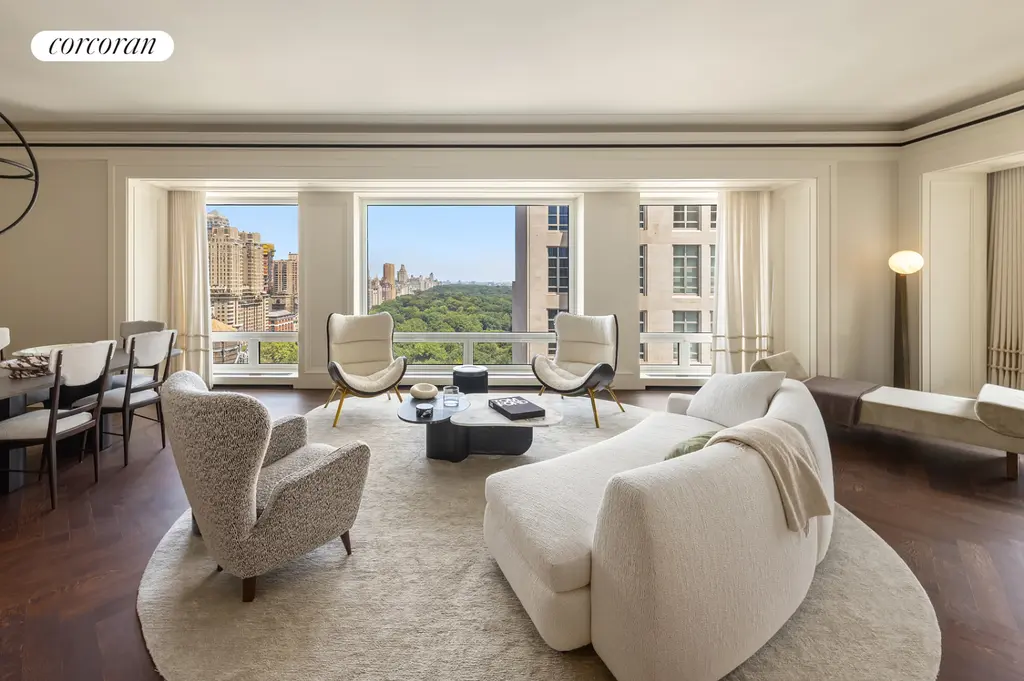
220 Central Park South, #23C (Corcoran Group)
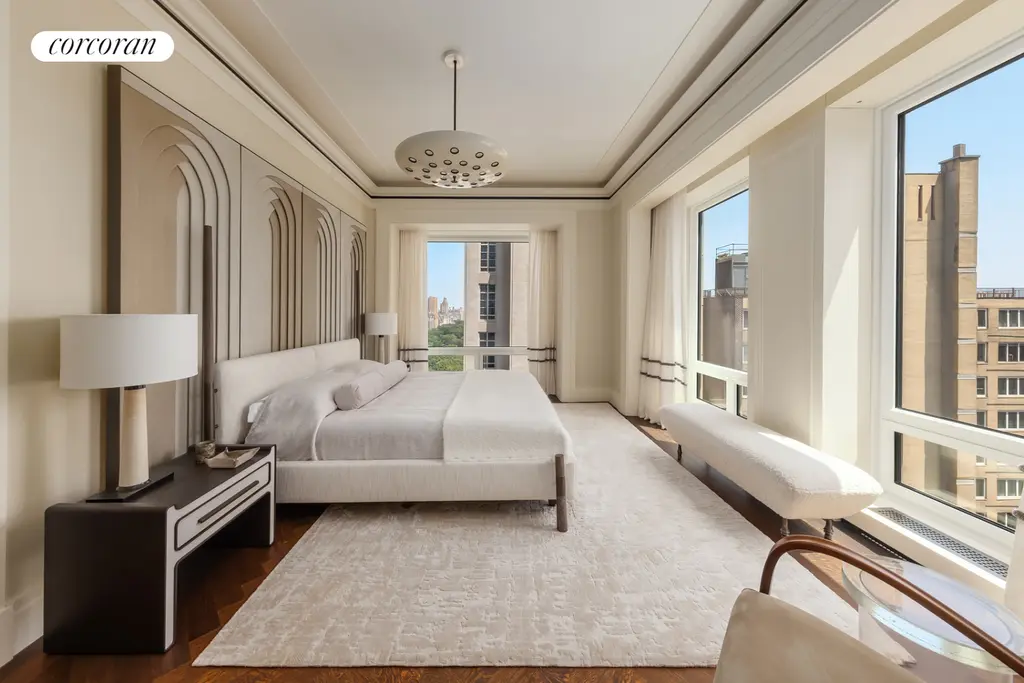
"15 Central Park West may well be the city’s most desirable residential address in terms of amenities, location and views" — Carter Horsley
 15 Central Park West's porte-cochere entrance
15 Central Park West's porte-cochere entrance
15 Central Park West, #12L
$7,100,000
Central Park West | Condominium | 2 Bedrooms, 2 Baths | 1,925 ft2

15 Central Park West, #12L (Corcoran Group)
Would you like to tour any of these properties?
Just complete the info below.
Or call us at (212) 755-5544
"The Dorilton boasts the most attractive entrance gate in the city" — Carter Horsley
"Intruders are warded off by the very fine dragon fence around its moat" — Carter Horsley
 The Dakota entrance (Warburg)
The Dakota entrance (Warburg)

The Dakota, #75 (Douglas Elliman Real Estate)
"The double-height-entrance vaults have very handsome cast-iron gates with sculpted gazelle heads facing the courtyard" — Carter Horsley
The Apthorp, #11EN
$6,995,000
Riverside Dr./West End Ave. | Condominium | 3 Bedrooms, 3.5 Baths | 2,907 ft2

The Apthorp, #11EN (Douglas Elliman Real Estate)

"This very impressive and very handsome, pre-war, full-block apartment palazzo has a very large central courtyard and two impressive, vaulted, arched entrances" — Carter Horsley
 The Belnord gates (Image via Extell)
The Belnord gates (Image via Extell)
The Belnord, #M01
$10,450,000 (-4.1%)
Broadway Corridor | Condominium | 5 Bedrooms, 5.5 Baths | 4,550 ft2
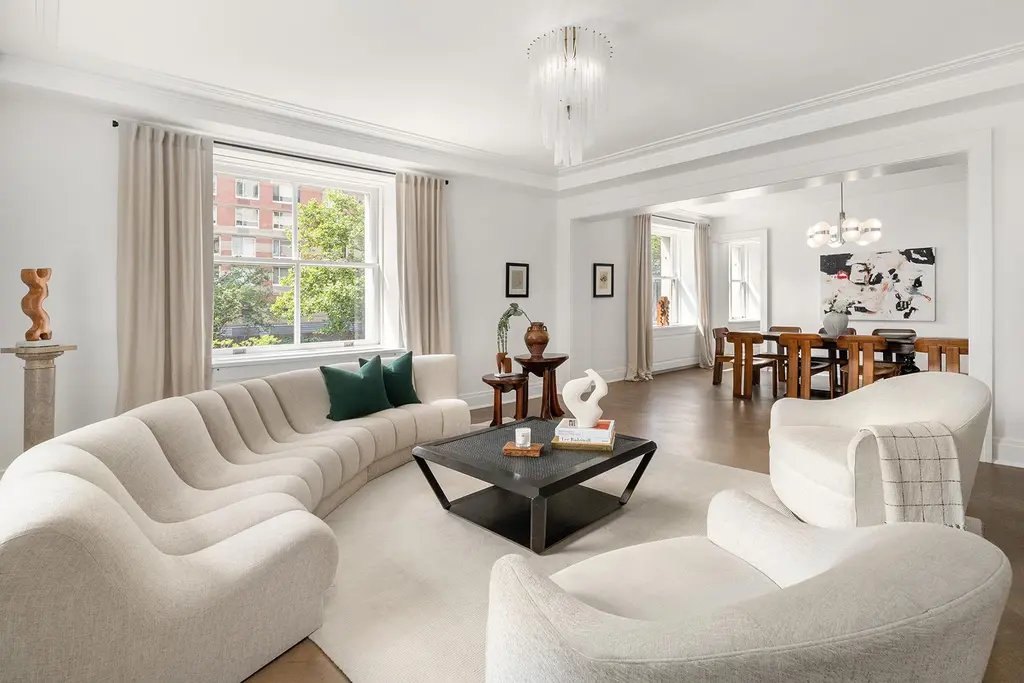
The Belnord, #M01 (Douglas Elliman Real Estate)
"With this building, Robert A.M. Stern now joins Rosario Candela and J. E. R. Carpenter at the designer summit of large, sumptuous apartments and erases the traditional distinction between very fine pre-war and post-war apartment buildings" — Carter Horsley

20 East End Avenue, #16A (Corcoran Group)

"This New York treasure boasts an impressive Gothic triple-arch entrance with a circular driveway" — Carter Horsley
1185 Park Avenue, #PH1617G
$14,500,000
Carnegie Hill | Cooperative | 5 Bedrooms, 5.5 Baths | 5,100 ft2

1185 Park Avenue, #PH1617G (Douglas Elliman Real Estate)


 Graham Court (Creidt: Vergara, Camilo J., photographer via Library of Congress)
Graham Court (Creidt: Vergara, Camilo J., photographer via Library of Congress)
Would you like to tour any of these properties?
Just complete the info below.
Or call us at (212) 755-5544
Would you like to tour any of these properties?

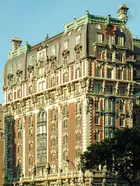
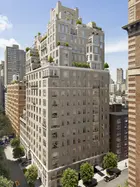
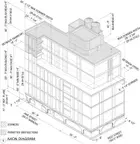
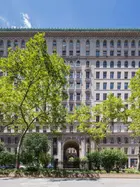
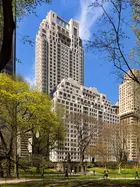
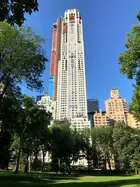
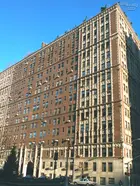
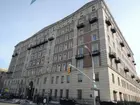
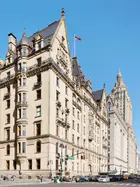
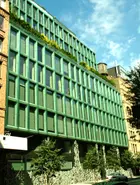
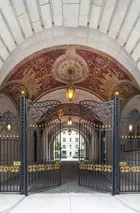
 6sqft delivers the latest on real estate, architecture, and design, straight from New York City.
6sqft delivers the latest on real estate, architecture, and design, straight from New York City.
